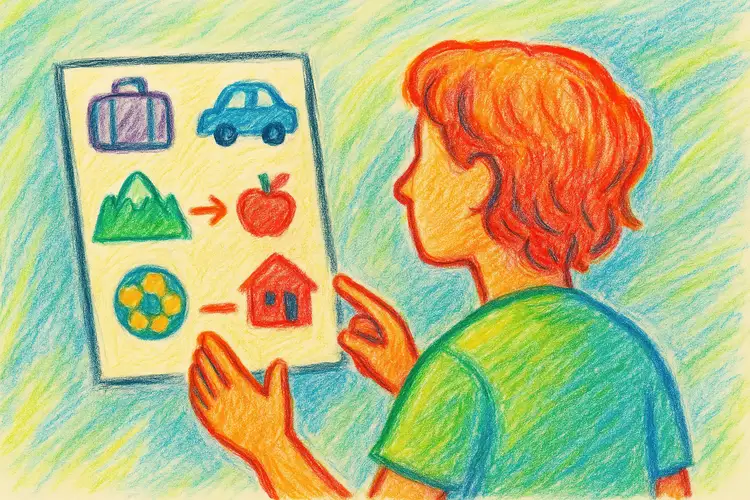Visual Schedules for Trips and Holidays: Stress-Free trips
Published {$created} by Carsten Blum
Trips and holidays often mean new places, new people, and unpredictable routines.For many children — especially those with autism, ADHD, or sensory sensitivities — this can feel overwhelming.Lack of structure can lead to anxiety, meltdowns, or resistance to leaving the house.
Visual schedules can help by making travel and holiday routines clear. Children know what will happen, where they are going, and what to expect.

How Visual Schedules Support Travel
Predictability: Children see the steps of the trip in order.
Smooth transitions: Pictures reduce stress when moving from one activity to the next.
Reduced anxiety: Clear visuals make unfamiliar experiences less intimidating.
Positive engagement: Children feel more secure and excited about what’s coming.
Common Steps for Trips and Holidays
Depending on the situation, a travel schedule might include:
For day trips
Pack bag
Car ride / bus / train
Arrive at destination
Eat lunch
Activity or playtime
Return home
For holidays
Pack suitcase
Travel (car, plane, train)
Check in at hotel or holiday house
Explore new place
Daily activities (pool, beach, sightseeing)
Meals
Return journey home
How to Create a Travel Schedule
Plan the main steps of the trip in advance.
Use picture symbols for travel, eating, sleeping, and activities.
Show the schedule to your child before leaving, so they know what to expect.
Use portable formats – laminated cards, small notebooks, or mobile apps.
Update as needed – keep it flexible for unexpected changes.
Example of a Travel Schedule Chart
Step | Symbol | Task |
|---|---|---|
1 | 🎒 | Pack bag |
2 | 🚗 | Car ride |
3 | 🏞️ | Arrive at park |
4 | 🍎 | Picnic lunch |
5 | ⚽ | Play activity |
6 | 🏠 | Return home |
Tips for Success
Keep the schedule visible during the trip.
Add countdowns or clocks for travel times.
Prepare backups – e.g., pictures for “unexpected wait” or “rest time.”
Celebrate achievements – praise when routines are followed calmly.
Benefits Beyond Travel
Visual schedules for trips not only reduce stress but also help children build confidence in new environments.They develop coping skills for change and flexibility, which benefit them in school and everyday life.
Summary
Trips and holidays don’t have to be stressful.By using a visual schedule, you give children a roadmap of the day, reduce uncertainty, and create a more relaxed experience for the whole family.
Next step: Try making a simple day trip chart before your next outing.